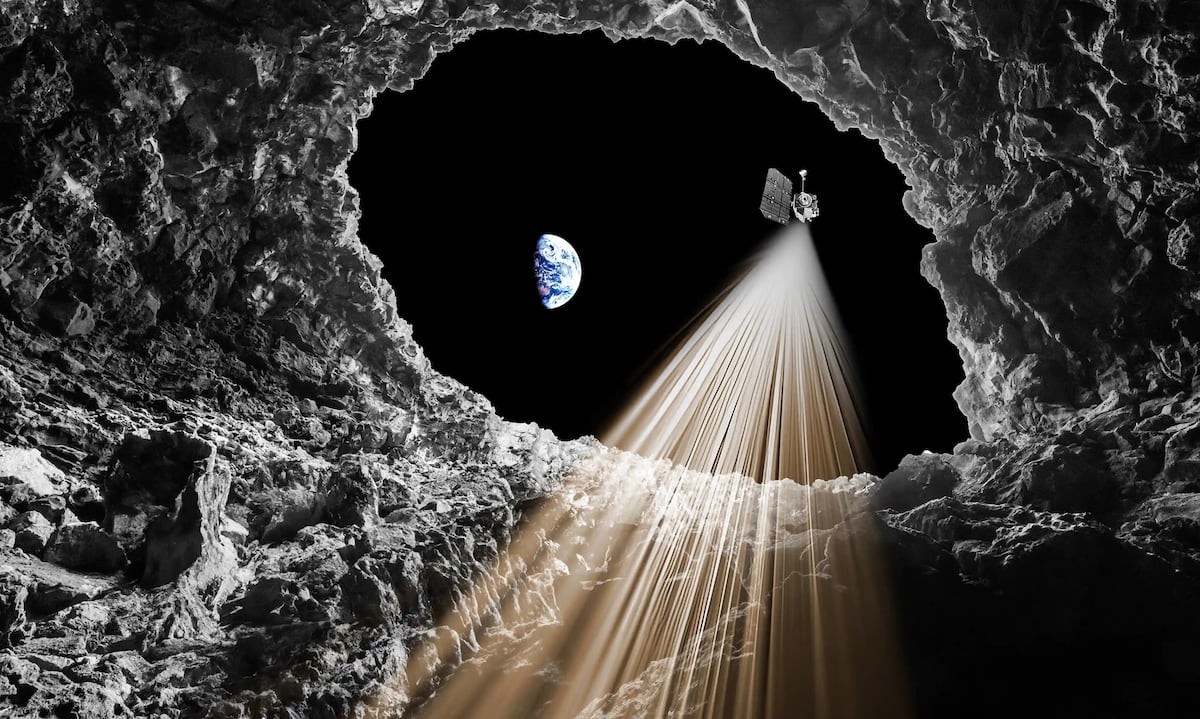Will NASA Astronauts or Chinese Taikonauts Live in Moon Caves? | Science

A team of Italian astronomers from the University of Trento has just published a detailed analysis of the lunar cave. In particular, a radar study of the entrance mouth and the first sections of a gallery that could extend hundreds of meters below the surface.
Strictly speaking, lunar caves are not a new discovery. Vern Oberbeck, a planetary scientist hired by NASA, theorized about their existence half a century ago. The first was discovered in 2009, thanks to images sent back by a Japanese probe. Kaguya. Later other satellites, especially Lunar Reconnaissance Orbiter (LRO) add new products to the catalog. Today, more than 200 are known.
The cave currently being studied is a pit 45 meters in diameter and up to 80 meters long. When the sun hits it vertically, you can see the bottom, 150 meters below, covered with stones. This accident occurred in the city of Sea of Tranquilityapproximately 400 kilometers from the Apollo 11 landing site.
Its origin is associated with the collapse of a lava tube, the remaining structure of a flow of molten material that occurred in very ancient times, when the great lunar plains were still young. These formations are also found in volcanic areas of our planet.
Cave walls Tranquillitatis They seem to be cut all the way to the beak. To place a car on the bottom, it would need to be lowered using something like a crane. Others, however, have slopes of about 45°, too steep for a wheeled vehicle to negotiate, but there are alternatives. A jumping robot with legs is being studied that could feel very comfortable exploring these chasms.
The Italian astronomers’ work is based on radar data collected by LRO more than five years ago. This is how it usually works: the reels of magnetic tape on which the data is collected can be stored for decades until someone needs it for a specific study.
That’s what happened to hundreds of images transmitted by the lunar orbiter that prepared the landing of the first cosmonauts in the 1960s. They were once used to select the safest places to rest, but were forgotten in a warehouse until an analyst discovered them. And not only the drums, but also an outdated version of the machine that would allow you to read them. When the photos were run through a modern image processing system, their quality amazed the technicians themselves. It was never possible to appreciate this on the old analog equipment.
This time the key was a slight increase in the brightness of radar echoes observed near the cave entrance. Tranquillitatis. After testing various models, they concluded that the cavity extends further, perhaps up to 50 or 80 meters. This is a cavern the size of an Olympic swimming pool. If necessary, it would be a good structure to create a shelter for future astronauts. At this depth, they would be safe from meteorite impacts, and the bombardment by cosmic rays would be significantly softened. In addition, as it happens in caves on Earth, this mineral would help soften the temperature difference between day and night.
The authors of the cave’s discovery emphasize that the accessibility and slope of the channel promise the possibility of creating a lunar base and that such caves could be commonplace under lunar plains. And they noted that this could be crucial for lunar missions, as the lunar surface is extremely hostile, with extreme temperatures (from 127 to -173 degrees) and high cosmic and solar radiation. Therefore, finding safe places for infrastructure such as these caves is essential for sustainable exploration. NASA has already considered the possibility of creating a future base by covering its walls with a thick layer of lunar regolith. China has initially indicated this option, but has not yet announced specific plans.
About six months ago, a video leaked online from the China National Space Agency, likely intended for domestic consumption, detailing its plan to colonize the moon. It mentioned using magma tubes to build underground habitats, inflatable structures that would be covered in insulating material by robots, and building an orbital station around the moon from which robotic exploration and resource-hunting missions could be conducted.
The video also raises the possibility of drilling tunnels to the surface by launching a rocket from lunar orbit. This sounds more like science fiction than reality, but it is a long-term plan that would likely see China partner with Russia to launch and build a future International Lunar Research Station.
When? Several years ago, plans were drawn up for Russian-Chinese cooperation for the period 2031 to 2035, but the Chinese agency at one point noted that it planned to begin a robotic program in this regard during the same decade. In fact, the next robotic probe Chang’e 7 It will repeat the work of its predecessor, extracting samples from the far side of the Moon. This will happen in 2026. Chang’e 8announced for next year, will have the mission to “test technologies aimed at constructing an international lunar base.”
You can follow ITEM V Facebook, X And Instagramor sign up here to receive our weekly newsletter.
